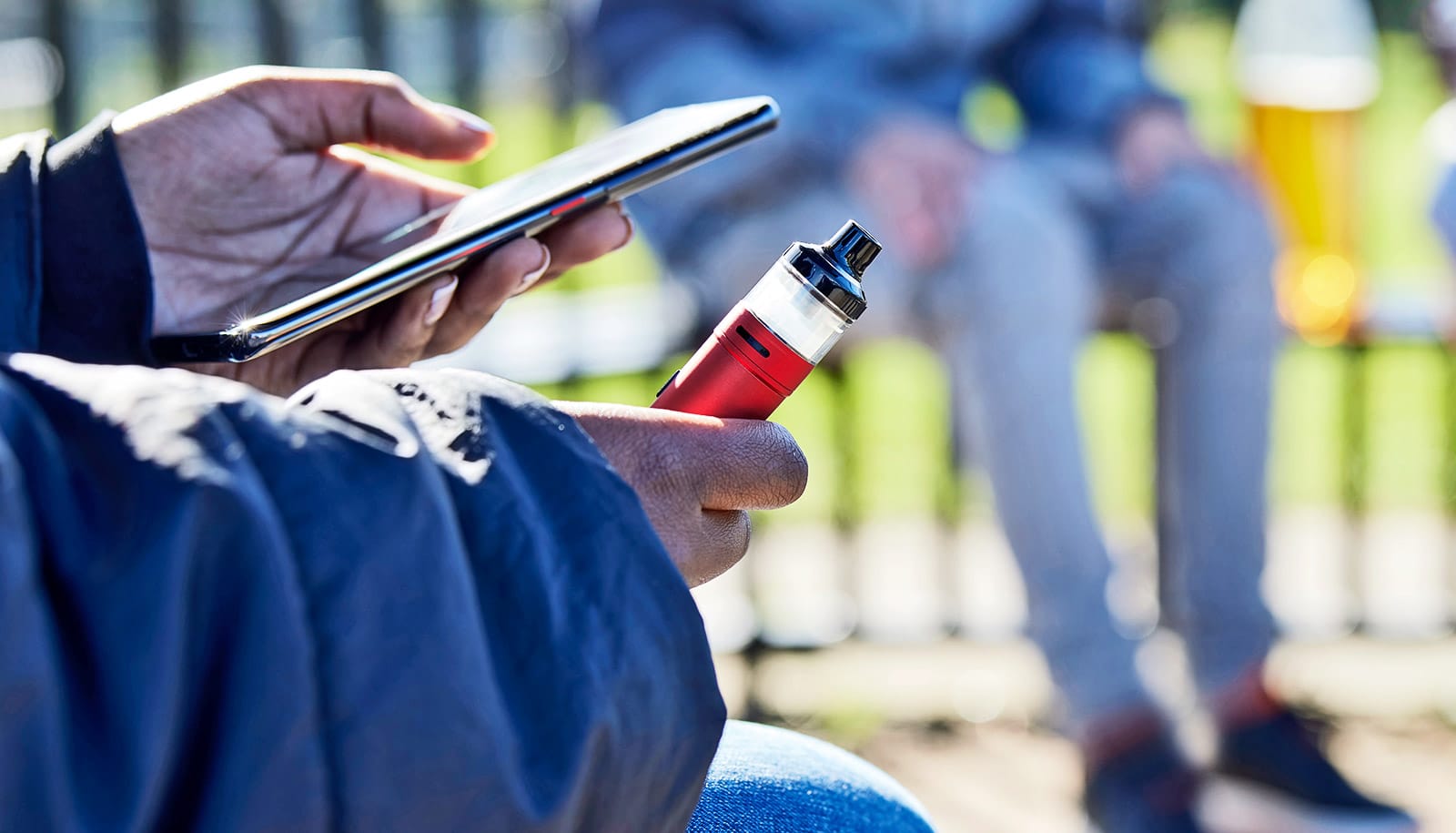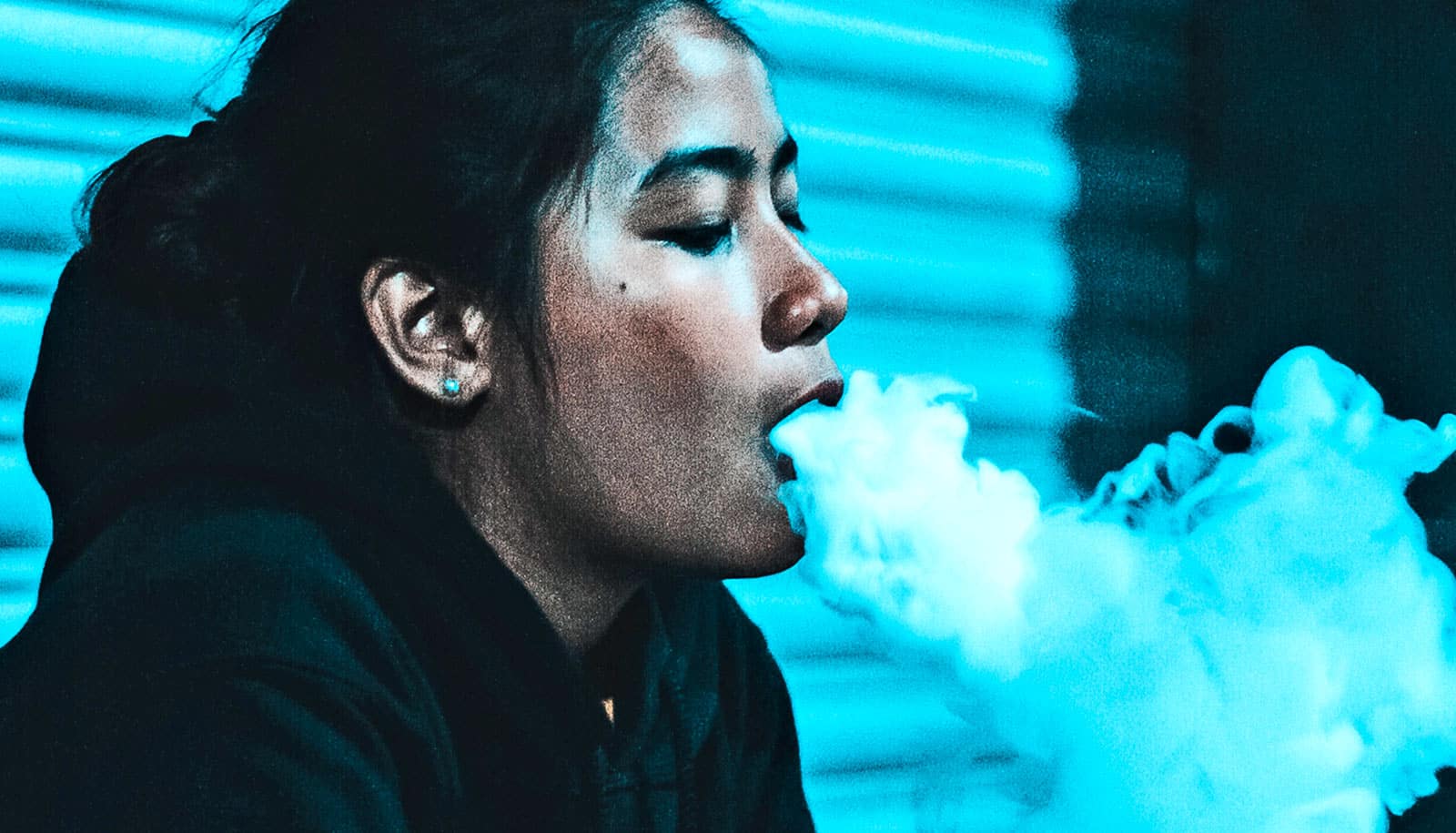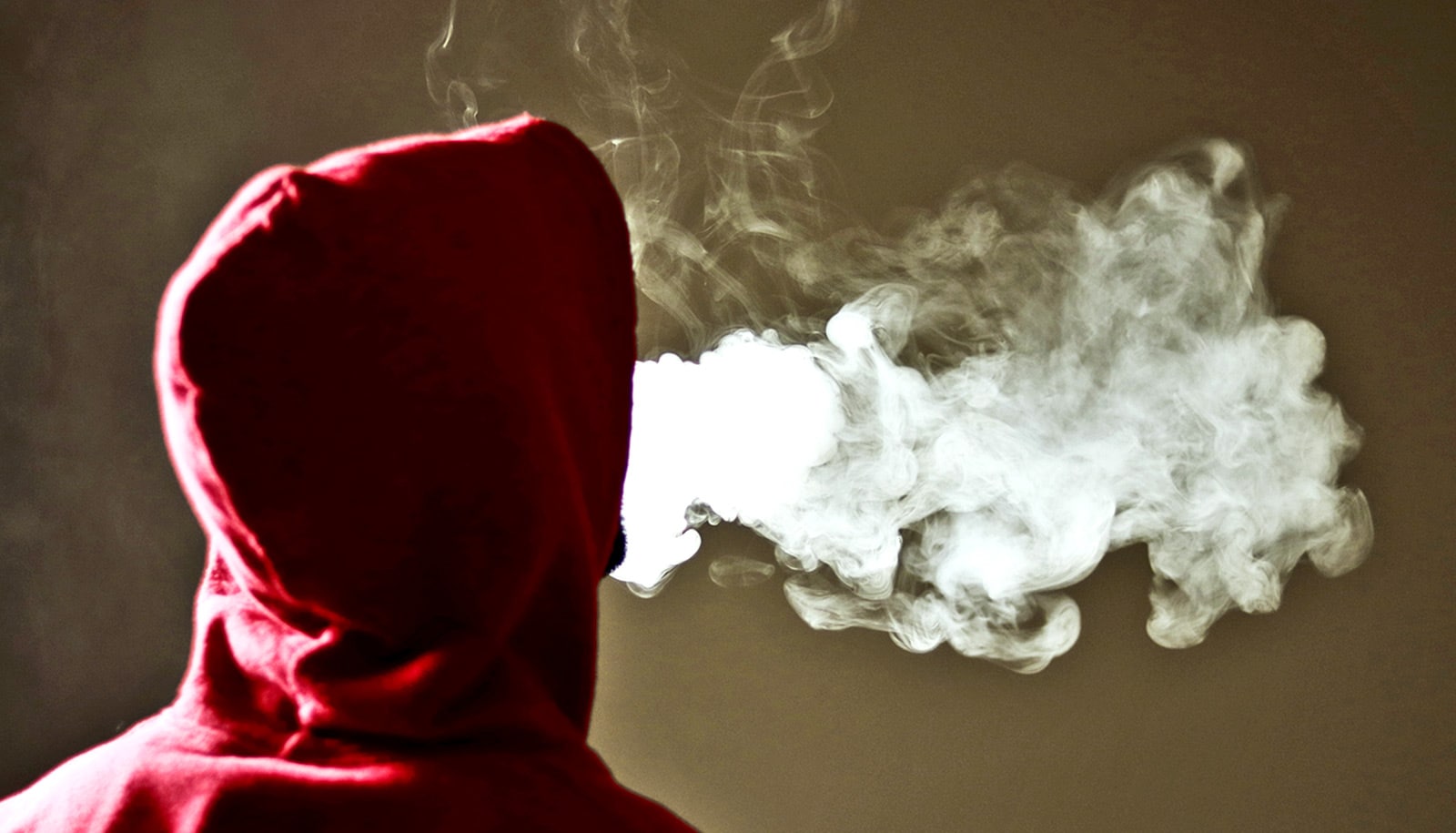Americans are vaping substances never meant to be inhaled, including melatonin, essential oils, tea, vitamins, caffeine, and other non-nicotine substances, according to a nationwide survey.
The survey, which asked more than 6,000 teens, young adults, and adults ages 13-40 about their vaping habits, is the first to examine non-nicotine vaping in a national sample.
Although some of these non-nicotine substances are safe when ingested, inhaling them in vaporized form could harm the lungs, scientists say. Several chemicals, solvents, and flavors in non-nicotine vapes are also found in nicotine vapes, and are known to have harmful effects independent of nicotine.
“Anything you’re vaping—anything you’re buying without a prescription, heating, and inhaling—is bad for your lungs.”
“What stands out most from our findings is the fact that almost 14% of younger teens and 24% of young adults have used non-nicotine vape products,” says Bonnie Halpern-Felsher, professor of pediatrics at Stanford Medicine and senior author of the paper in JAMA Network Open.
Non-nicotine vapes currently escape Food and Drug Administration regulations that cover nicotine e-cigarettes or ingested supplements, meaning there are no restrictions on the devices, ingredients, or marketing. And there are no age limits to purchase them. And many are marketed with unfounded health claims, says Halpern-Felsher, making them appear safe to teens and adults, even though their safety has never been tested.
“Anything you’re vaping—anything you’re buying without a prescription, heating, and inhaling—is bad for your lungs,” Halpern-Felsher says.
Vaping survey says…
The researchers surveyed teens, young adults, and adults living across the United States, studying four age groups: 13-17, 18-20, 21-24, and 25-40. The groups represent a range of developmental stages: early teen years, early adulthood below the legal age of nicotine e-cigarette sales, young adulthood before full brain maturation, and adulthood. Participants’ sex and race and ethnicity distributions were matched to the US population.
Participants answered questions about their use of non-nicotine vapes, nicotine-containing vapes (aka e-cigarettes), and combustible cigarettes. The survey asked if participants had ever used these products, if they had used them recently, and when they first tried each product. The survey also included questions about usage patterns, specific brands, preferred flavors, and ingredients used in the non-nicotine vapes.
In total, about 26% of participants had tried a non-nicotine vape; almost 17% had used a non-nicotine e-cigarette in the past 30 days, and some 12% had used one in the past seven days. Use differed by age, with the highest rates of non-nicotine usage in the 21-24-year-old group (about 38%), followed by the 25-40-year-old group at nearly 33%.
About 14% of 13-17-year-olds and 24% of 18-20-year-olds reported having tried a non-nicotine vape, with more than half having used these devices multiple times. On average, participants reported trying non-nicotine vapes at a younger age than nicotine vapes, raising concerns that non-nicotine vapes are a gateway to products with nicotine.
What are you vaping?
Many younger survey participants did not know what they were vaping. About 24% of 13-17-year-olds and 19% of 18-20-year-olds who reported vaping said they were unaware of what was in the non-nicotine vapes they used.
Vaping ingredients popular among teens and young adults included tetrahydrocannabinol (THC), an active compound in marijuana; melatonin; cannabidiol (CBD, a marijuana derivative that does not produce a high); essential oils; caffeine; and tea.
Among adults ages 25-40, caffeine, vitamin B, tea, and THC were popular. The complete list of non-nicotine vape substances included vitamin C, lavender, essential oils, propylene glycol, glycerin, and other flavors.
While the use of marijuana compounds was not surprising, the popularity of other substances was unexpected and worrisome, Halpern-Felsher says.
“We cannot continue to have non-nicotine vaping products on the open market for anybody to buy…”
The Food and Drug Administration has given some chemicals added to foods, including vitamins and certain flavorings, the designation “generally recognized as safe.” But that’s not the full picture.
“The GRAS designation means something is safe to consume through eating, or as a salve on the skin, but that’s very different from heating a substance and inhaling the resulting aerosol,” Halpern-Felsher says. “That’s where it becomes concerning for your lungs.”
It is unclear what dose, if any, of these substances is safe to inhale, and what the risks or side effects may be, Halpern-Felsher notes. In addition, non-nicotine vapes have ingredients in common with vapes that contain nicotine—including propylene glycol, glycerin, and flavor compounds—which are known to be harmful to the lungs.
Unknown hazards
For several commonly vaped substances, our existing knowledge of their biologic activity suggests they are hazardous to the lungs, and should make consumers wary, Halpern-Felsher says.
“We really need toxicologists and other scientists to help us understand what these chemicals are doing to our bodies, and by what mechanisms,” she says, noting that, for instance, large quantities of vitamins can have toxic effects. Lung surfactant, which the body produces to lubricate the air sacs of the lungs, is an oily substance; inhaling vaporized fatlike substances such as essential oils, glycerin (a common ingredient in all vapes) and flavor compounds may interfere with lung function.
The take-home message for all, but especially young people, is that any inhaled aerosol—other than medication prescribed by a physician, such as asthma treatments—could be dangerous.
“During COVID, there has never been a more important time to keep our lungs healthy,” Halpern-Felsher says.
She hopes the findings will spur policy change to better regulate the vaping industry, especially to protect teenagers.
“We cannot continue to have non-nicotine vaping products on the open market for anybody to buy, especially given that young people are sharing them and don’t know what they’re using. We need regulation and labeling, and need to make sure they don’t get into the hands of young people.”
Source: Stanford University



